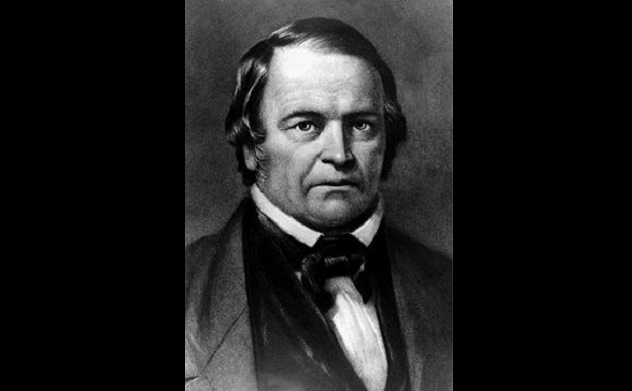10 Kharijite
The first identifiable sect of Islam was the Kharijite sect, one that remains relatively unknown among non-Islamic people. After Muhammad died, a string of caliphs followed him, but there was constant discussion and debate about how the religion should actually proceed. When an assassin killed the third caliph, Uthman, the Muslim community split between two factions, each fighting for control of the community and doctrine. The main debate was over who should be the next caliph. Eventually those two factions would form the Shi’ite and Sunni sects. During that time, a third group organized as a sect of Islam, separate from the other two factions. The chief doctrine of the Kharijites was the idea that anybody could be a caliph. While the rest of the Muslims argued over whether the caliph should descend from Muhammad or not, the Kharijites believed that anybody could be a caliph, as long as they received revelation from Allah. They held a democratic view of the caliphate, rejecting the idea that the caliphate should descend through family lines. Along with their views on the caliphate, the Kharijites held an extremely puritanical view of Islam. According to them, any major sin committed by a Muslim disqualified that person as a Muslim. As they spread their beliefs, the Kharijites also evolved into a violent organization, conducting killings and terrorism against Muslims who did not agree with them. Over time, they split into various sects, some of which still exist in much less extreme forms. However, some scholars of Islam believe that although ISIS is not a literal descendant of the Kharijite movement, it bears many ideological similarities to the earlier sect.
9 Quranists
While other forms of Islam might seem incredibly traditional, none are as traditional as the school of thought of the Quranists. This sect of Islam comprises a variety of schools unified by the belief that only the Quran is the word of Allah. Quranists reject any Muslim literature that does not come directly from the Quran, even going so far as to say that other books or writings are forgeries. One of the main things the Quranists reject is the hadith. In Islamic theology, the hadith is the body of religious works that chronicle what Muhammad did and said during his life. Since the Quran does not have any biographical elements of Muhammad’s life, the hadith became important in Islam to set up practical aspects of living as a Muslim. In the Quranist schools of thought, the hadith is unnecessary. Only the Quran is necessary to tell a Muslim how to live, and anything else is a distraction. Quranists have existed since the early days of Islam and still persist today. They reject many practices of Islamic governments and organizations. They are strictly anti-terrorist and believe that any country that has built itself on the hadith principles is in the wrong. However, this makes Quranists very unpopular in Muslim countries. Quranists suffer persecution at the hands of many Muslim governments, often involving torture and imprisonment. Despite the opposition, their rejection of the hadith is gaining traction among modernist Muslims who want to throw out any hadith that contradicts the Quran. Both modernist Muslims and Quranists believe that the problems in the Islamic world come partly from the traditional elements of the hadith and seek to reject those teachings.
8 Adamites
In the second and third century, various gnostic sects appeared in the Christian world. Each of these sects had doctrines that differed from mainstream Christianity. Most emphasized hidden or esoteric doctrines. The Adamite sect looked to bring men back to the state that Adam and Eve were in during the Garden of Eden. Because of this, they rejected any sort of institution that could not have existed in the Garden of Eden, completely eschewing regulatory practices in their doctrine. Adamites took a dualistic view of life, contending that matter was evil and that the spirit was good. As such, they focused on freeing the body from its material shell. They also held to the idea that since the material world is evil, human beings could do whatever they wanted. Due to this belief and their views of the Garden of Eden, the Adamites often worshiped in the nude. They taught that everyone would eventually face God naked, so nude religious practices were best. Still, their worship was centered on Jesus Christ. Adamites refused to comply to laws since governments did not exist in the Garden of Eden. Other Christians viewed the Adamites as heretics; by the fourth century, the Adamites died out. Oddly, Adamite sects came back in the pre-Reformation medieval ages. Contemporary accounts of the neo-Adamites showed that they kept up their practices of running around nude and worshiping in nature. They also were well-known for their highly sexual lifestyle. This new group of Adamites ended in 1421 when the Taborites, a rival religious community, attacked the main Adamite community in modern-day Czechoslovakia and killed many of them.
7 Shabbetaianism
Jewish theology has a strong Messianic expectation, teaching that a savior will come to help the Jewish people fulfill their ultimate destiny. Unfortunately, many people throughout the history of Jewish religion have played on that expectation for their own gain. Few are as successful as Shabbetai Tzevi. Born in 1626, Tzevi was an ardent student of the Kabbalah, the Jewish mystical writings. At the age of 22, he attracted followers and declared himself the Messiah. Expelled from his hometown of Smyrna, Tzevi traveled throughout the Middle East gaining followers. Eventually he decided to enter Jerusalem, with a preacher named Nathan of Gaza acting as Elijah, preparing the way for the coming Messiah. In 1665, the rabbis of Jerusalem threatened Tzevi with excommunication, so he left the city. A year later, he entered Constantinople and was quickly arrested. Facing torture, Tzevi converted to Islam. He was eventually banished and died alone with few followers. The sect of Shabbetaianism grew around Tzevi. Even after his apostasy from Judaism, his few followers kept believing that he was the Messiah. Turning to the Kabbalah, Shabbetaians looked for esoteric and mystical knowledge about how a person can keep their Jewish faith while outwardly acting like they belonged to a different religion. Followers remained mystical in their approach to Jewish life but eventually died out in the 18th century. A form of Shabbetaian ideology survived in Jewish culture and was the foundation for the new Hasidic movement and future Zionist movements.
6 Chinese Muslim Sects
While most people do not think of China as having many Muslims, there are three distinct schools of Islamic thought in modern China, some of which are relatively new religious organizations. The earliest is known as Qadim or Gedimu. This sect of Islam is the most popular in China and is the most orthodox version of Chinese Islam. Although it has some aspects of Chinese culture, it retains the main tenets of Islamic thought but has remained more accommodating than the other Islamic sects. After the Qadim formed, another sect of Islam started in China. Called the Xidaotang, they were led by Ma Qixi and emphasized the mixture of Chinese culture with the doctrine of Islam. (The photo above shows a modern Xidaotang mosque in China.) This group used Confucianism to give meaning to its Islamic studies, teaching that it was important for people to have their own belief system and emphasizing the diminishing of one’s self to gain final union with Allah. Historically, this group has been small and has constantly faced violence from other Muslim sects, but it still remains an important part of Chinese culture and trade. The last Chinese sect is the Yihewani, the newest organization. This group directly opposes the Qadim school of thought. Yihewani practitioners eschew most traditional Islamic traditions, instead focusing on the religion as a philosophy, not so much a pragmatic way of living. The Yihewani emphasize education and modernist reforms, but insist that those reforms must take on a uniquely Chinese character. Most people attracted to the Yihewani school of thought are urban intellectuals and modernist Muslims, but they do not constitute a well-ordered organization like other Islamic sects.
5 Bardaisanites
In the gnostic period of Christianity, various mystical leaders popped up to lead short-lived and often persecuted gnostic sects. Modern Christians looking at their doctrines may find gnostic sects only slightly related to Christianity, if at all. However, they were a part of the growth of Christianity in the world. The Syrian mystic Bardaisan was a key gnostic leader who not only founded his own sect but also was the first religious leader to Christianize Syria. Bardaisan converted in 179 and began to teach Christianity through missionary efforts. He quickly gained a following that put him at odds with another major sect at the time, the Marcionites. Bardaisan taught that God had not created the world ex nihilio (out of nothing). Instead, he said the world came about when God shuffled four elements—water, earth, fire, and light—into a new form. Each passing generation brought the human race closer to elemental perfection. Bardaisan rejected the idea that God created evil or Satan, but rather that these were manifestations of a hierarchy of gods. An odd characteristic of Bardaisan’s teachings was his focus on the stars and planets. His followers believed that the astral bodies connected with their fates. At the same time, the Marcionites were teaching about the evil of flesh and advocating a celibate, vegetarian lifestyle. Bardaisan rejected that idea and taught his followers to love their bodies and that sexual reproduction was an important part of existence. Of course, Bardaisan also taught traditional Christian ideas to the Syrians and primed the people of the area to accept mainstream Christianity, which replaced his sect over time.
4 Millerites
Common in Christianity is the idea that Jesus Christ will return to the world again and usher in a period of peace and prosperity. For centuries, Christian leaders have prophesied about the Second Coming, with claims reaching their fever pitch in the US in the 19th century during a period of religious intensity. One of the most prominent teachers on the subject of the End Times was William Miller, who created his own Christian sect known as the Millerites. Miller fell in love with the books of Daniel and Revelation in the Bible, both of which discussed the Second Coming at length. At the end of Daniel, the text has esoteric dates and numbers that are a guide to the time of the Second Coming. Miller worked with the texts and developed a chronology for the last days, giving a range of dates between March 21, 1843 and March 21, 1844. Apocalyptic fervor excited local citizens, and Miller gained a steady following throughout the western frontier of the United States. Miller came in contact with many other groups that had their own expectations of the Second Coming, most notably the Mormons in Nauvoo, Illinois. Mormon leader Joseph Smith recorded interactions with the Millerite movement and even allowed them to preach in his city, even though most Mormons viewed Miller with skepticism despite their similar doctrines. As 1844 approached, one of Miller’s followers, Samuel Snow, narrowed down the Second Coming to a specific date: October 22, 1844. Millerite followers began to prepare for the big day. They stopped their work and spent their time in religious studies. As the day approached, they quit their jobs, gave away their possessions, and paid off remaining debts. On the night of the supposed advent, Millerites came together in white “ascension robes” to meet Jesus Christ. Of course, nothing happened. The lack of Christ’s appearance crushed the Millerites, and the event was dubbed “The Great Disappointment.” Shockingly, splinter groups broke off from the main Millerite church and still exist, even though the original prophecies were proven false. Millerite break-off groups eventually formed the Jehovah’s Witnesses and Seven-Day Adventists, which take influence from Millerite doctrines, if not his actual prophecies.
3 Brethren Of The Free Spirit
The 13th and 14th centuries saw tremendous upheavals in European Christian society. During this time, the Avignon papacy struggled against secular European government heads, and the Inquisition was beginning. In this period of confusion, various interesting sects grew, including the Brethren of the Free Spirit, a lay Christian movement that tried to reinvent Christian theology toward a more individualistic and egalitarian philosophy. One of the most interesting aspects of their doctrine was the idea that God is incarnate in everything in the universe. This is a form of pantheism, the religious idea that the universe itself is God and is immanent in everything. Having a pantheistic Christian ideology was problematic at the time, especially since the Brethren used their doctrine to justify any action they took. Followers of the sect felt that God justified anything, including terrible crimes such as rape and murder. When people from the sect preached, they did so in the nude and were known to have very open views about sexuality. They viewed sex as a form of paradise and a mystical union. Of course, the Brethren of the Free Spirit were not popular among Catholic leaders. With this sect rejecting nearly everything about the Catholic church and doing things like ordaining women priests, the leadership took great care to squash them. Persecution and executions led to the sect dying out by the 15th century as the Catholics clamped down on unorthodox sects. Very little of the group’s doctrine survives in modern Christianity.
2 Shugendo
Shugendo is still practiced today (two modern practitioners are shown above), but it has few adherents and remains relatively unknown outside Asia. Defining Shugendo as a sect of any one religion is difficult. In practice, Shugendo is extremely syncretic. While many view it as a sect of Shinto, Shugendo is more accurately defined as a Japanese folk religion that borrows ideas from many religious sources, including Shinto, Taoism, Buddhist esoteric thought, and Onmyodo. Regardless of where the ideas come from, the unique center of Shugendo is mountain worship. The religion itself is very old but is still practiced today by a relatively small group. Solitary practitioners existed as far back as the seventh century, but it is unknown exactly when the religion started. Throughout Japan’s history, it has mixed in other Eastern religious ideologies but keeps the central idea that mountains are key to worship. Practitioners of the religion usually travel to the mountainous regions of Japan for their religious devotions. Overall, it is hard to pin down exactly what Shugendo doctrine is, since the specific practices of the religion are kept secret from the world at large and even from initiates into the religion. People who wish to follow the Shugendo path must go through purification rituals, many of which center around physical exertion from climbing around the mountains of Japan. In Shugendo practice, physical exertion is the key to spiritual enlightenment. Oddly, Shugendo practitioners also believe in a form of magic. When they reach enlightenment, they are given spiritual abilities. Of course, it is hard to pin down exactly what these abilities are, but they are known to involve predicting the future, seeing a person’s true character, exorcisms of demons, and healing abilities.
1 Ebionites
The beliefs of the Ebionite sect are extremely difficult to pin down. The Ebionites are either a sect of Christianity that had Jewish beliefs or a sect of Judaism that had Christian beliefs. Whatever the case, the Ebionites were an important syncretic religious group that influenced the early development of Christianity, with many of their texts resembling early Christian writings such as the Gospel of Matthew. The sect’s name came from the Hebrew word meaning “the poor.” It is unclear exactly when the Ebionites formed, but most records point to about 70 AD, after the Romans destroyed the temple in Jerusalem. Ebionites believed in Jesus Christ as the Jewish Messiah but also accepted many of the Christian rhetoric about Christ’s life. For instance, they believed in Christ’s resurrection and that Jesus was the Messiah prophesied in the Jewish scriptures. However, they believed that Jesus became the Messiah due to strict observance of Jewish law, and they rejected the virginal birth that became a common doctrine in Christianity. Rather, they believed that Jesus was the natural son of Mary and Joseph. In practice, the Ebionites followed Jewish law, but they removed aspects of it that didn’t fit with their doctrines, including rejecting animal sacrifices. Most Ebionites were vegetarians and lived an austere lifestyle. Although their doctrines are different from modern Christianity, the Ebionites were the first group recognized as Christians in the ancient world. Ancient historians state that when the Ebionites were around, anyone who identified as Christian followed their ideology. However, it is difficult to determine how widespread the Ebionites actually were. As gnosticism developed, other branches of Christianity formed and the Ebionites developed a decidedly gnostic doctrine. Over time, they died off as Christian doctrine became more uniform and evolved into the Christianity observed today. Zachery Brasier writes.
























